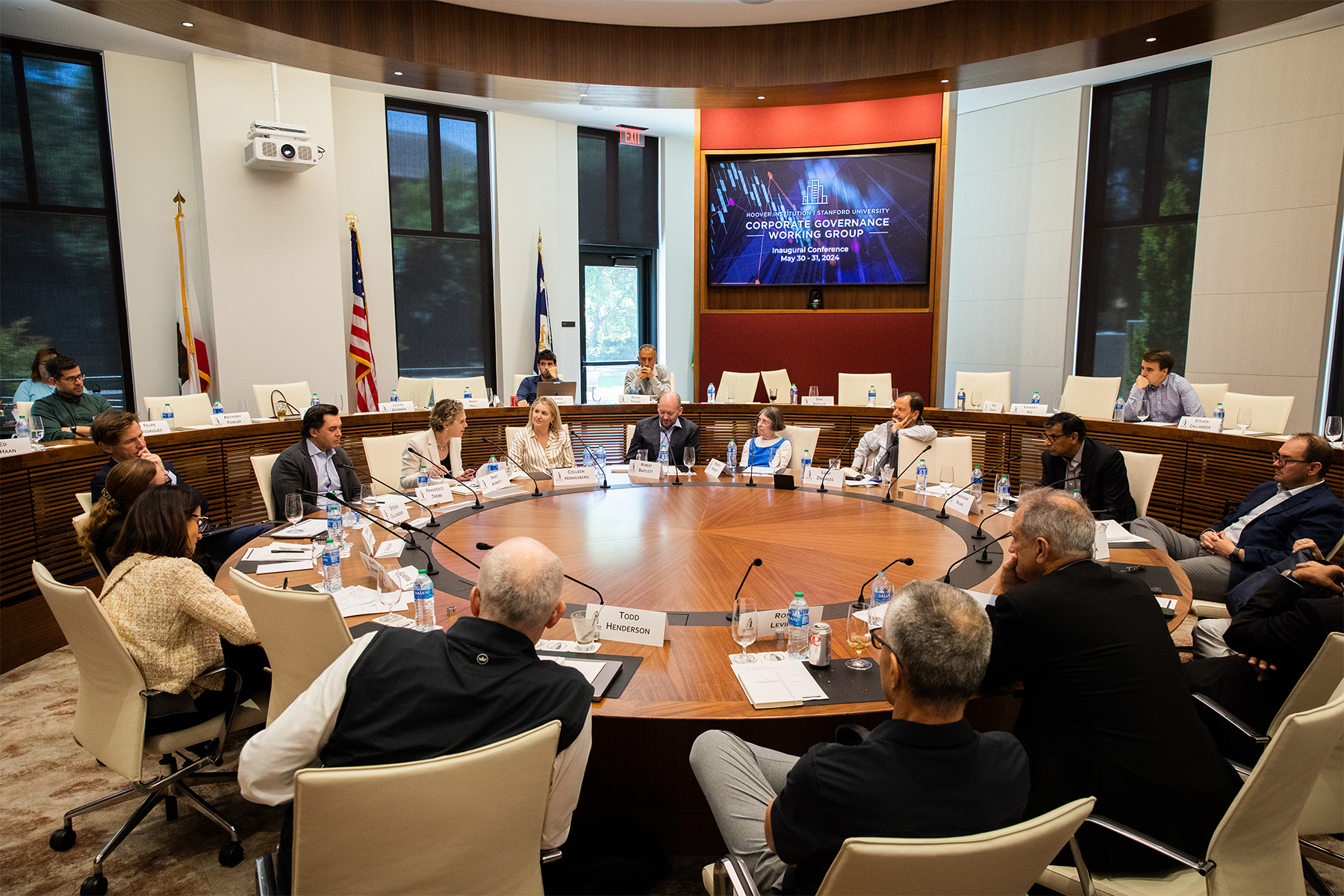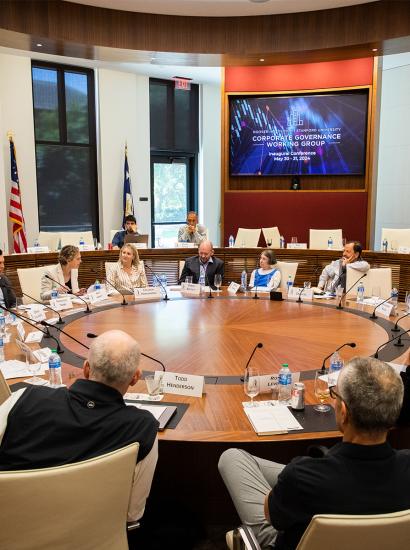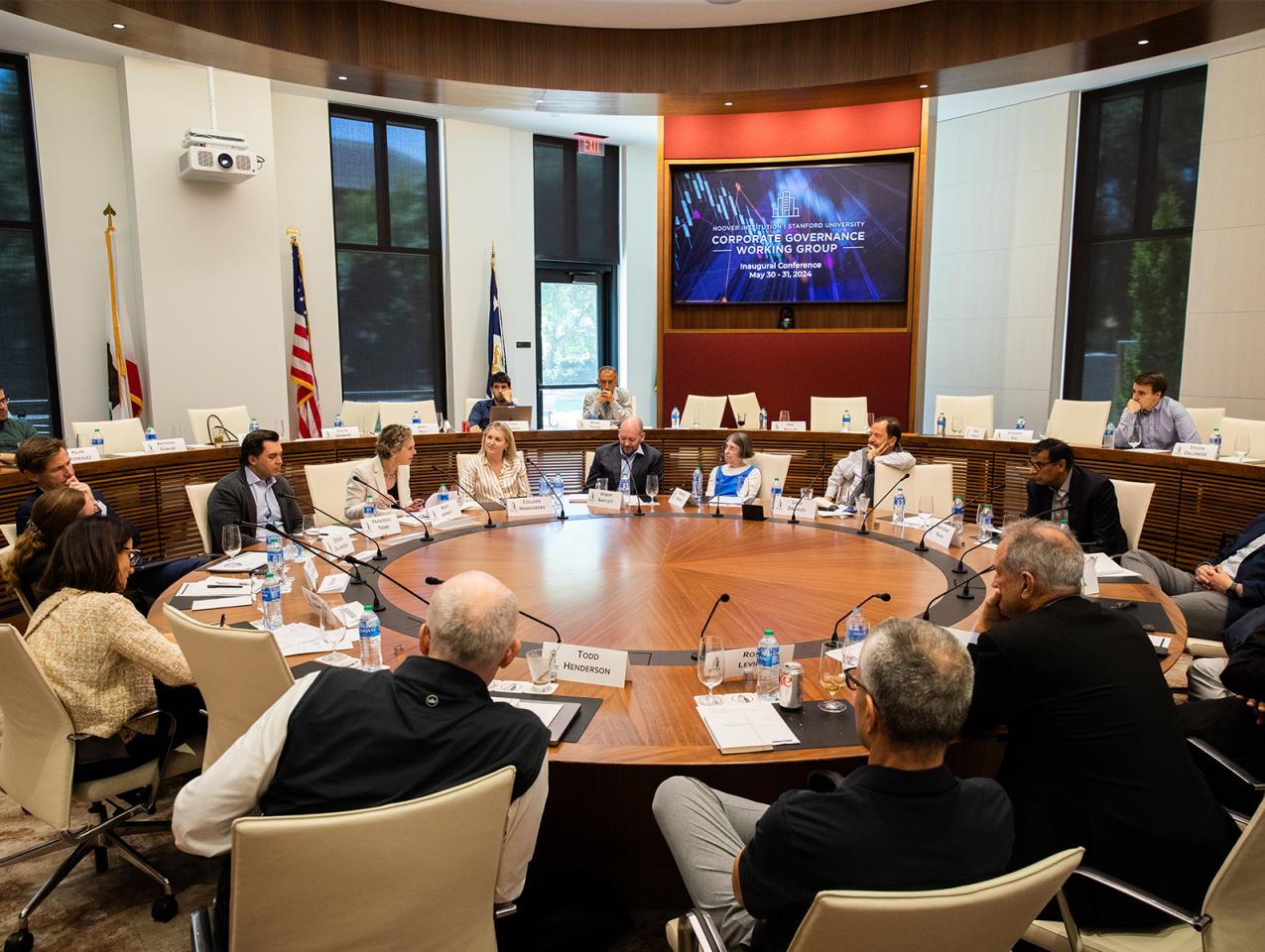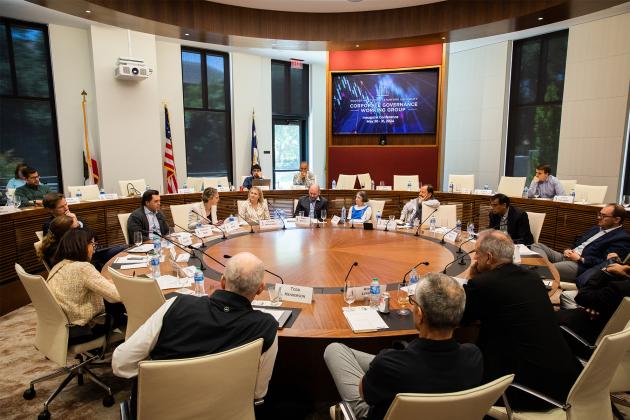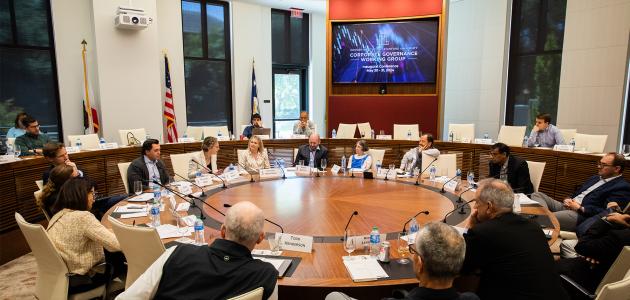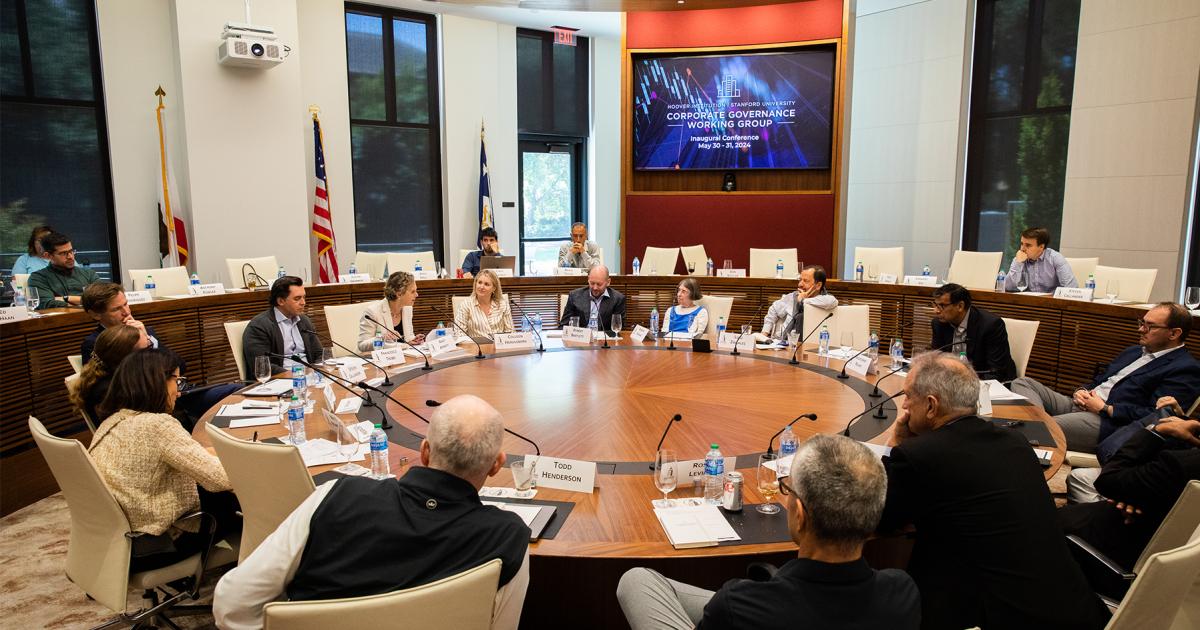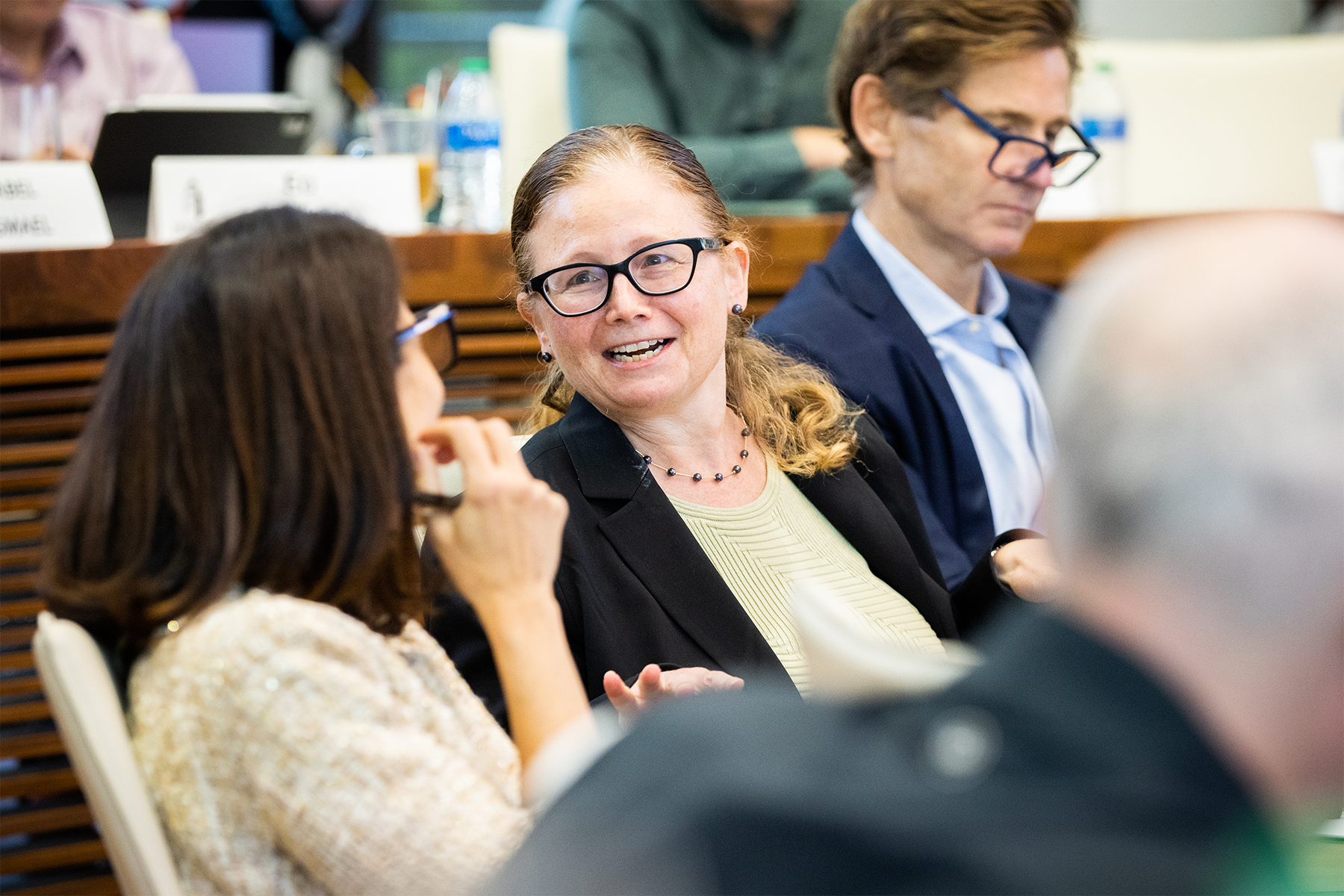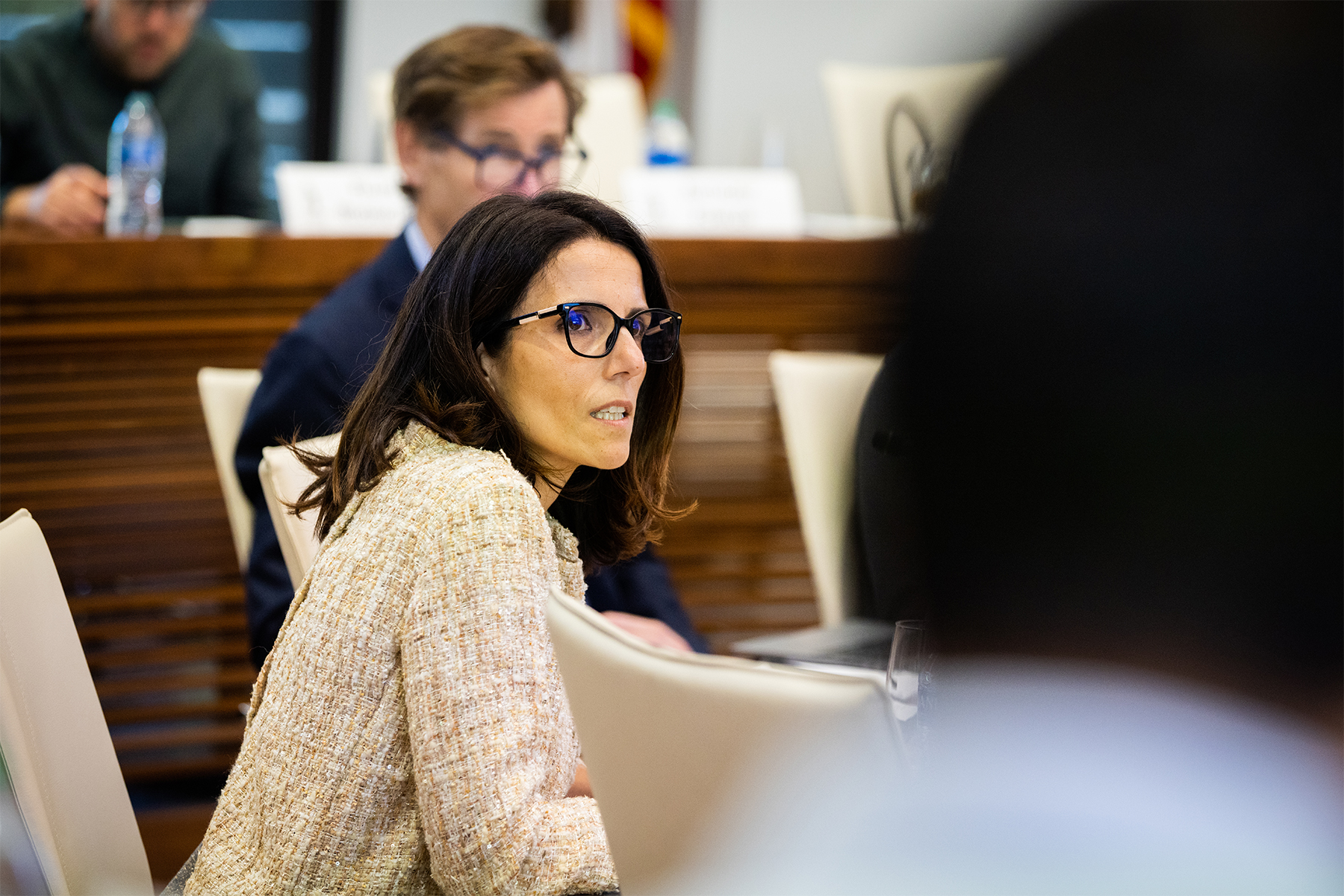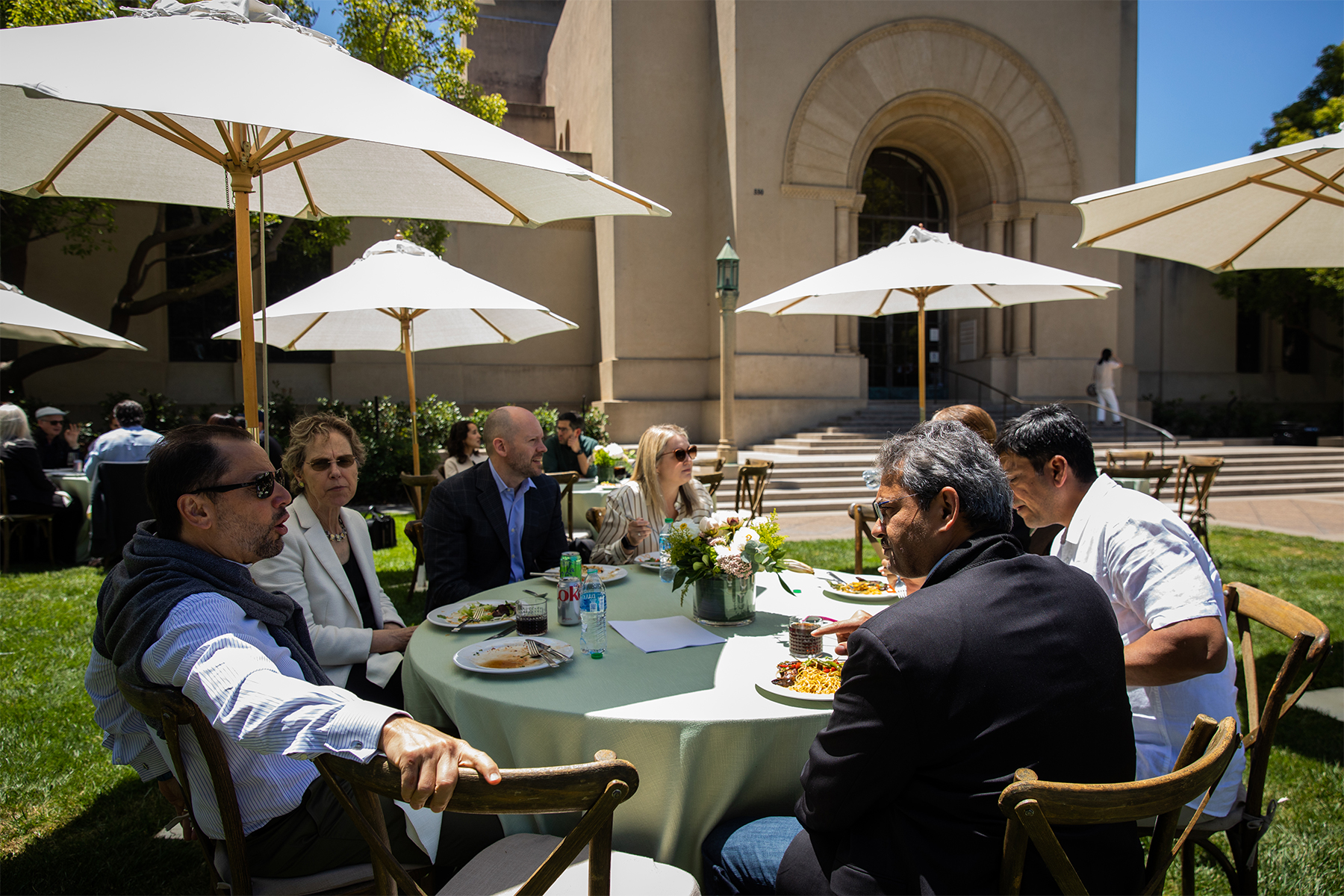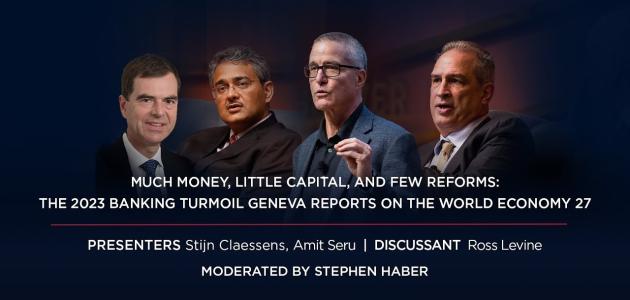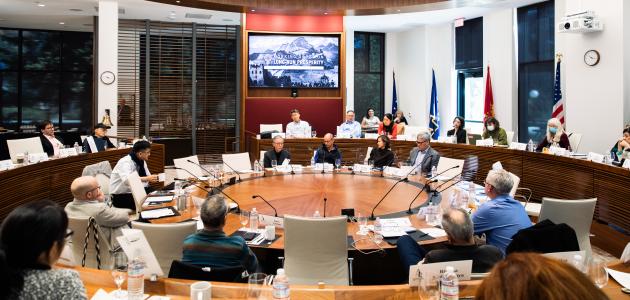Hoover Institution (Stanford, CA) — Scholars from across America discussed fundamental questions about the role and function of the corporation at the inaugural Corporate Governance Working Group Conference at Hoover on May 30–31.
Led by senior fellows Stephen Haber and Amit Seru, the conference addressed questions relating to the idea of shareholder primacy and how it should evolve, if at all.
The organizers chose papers that focused on similar themes to spark discussions. These papers explored whether markets were ignoring important effects outside their immediate scope; whether big shareholders influenced a company’s political involvement and, consequently, its governance; and whether companies should consider actions beyond just making profits for shareholders, such as lowering prices to benefit consumers even if it reduces profits.
“We aim, like in our previous working groups, to establish a network of dedicated scholars committed to conducting top-notch research on the main theme of our group. This research can then be used to shape policy,” explained co-organizer Seru.
What Do CEO Letters to Shareholders Really Mean?
During the conference, scholars also presented papers that researched the basic mechanics of how corporations operate, including examinations of annual CEO letters to shareholders and the proceedings of corporate board meetings.
A group including conference participants Luigi Zingales of the University of Chicago and Raghuram Rajan, Hoover senior fellow (adjunct), analyzed letters to shareholders penned by CEOs from 150 of the largest US companies between 1955 and 2020. Performing detailed content analysis, they observed a variety of trends within the letters.
For example, the average number of goals stated in each of these letters went up from two on average in the 1960s to about eight today. Also in the late 1960s, mentions of corporate social responsibility began to rise, staying prevalent until the 1980s, when they began to decline, only rising again in the years leading up to 2020.
These observations suggest the shareholder letters serve a public affairs or marketing purpose, with content reflecting the concerns of external stakeholders (customers, communities where the firm operates, supplies, etc.) at the time of publication. Participants suggested that, alternatively, CEOs could be using the letters to build up their own personal brands.
How Do Corporate Board Members Spend Their Time in Board Meetings?
In a separate paper, conference co-chair Seru and colleagues mapped out how corporate boards of directors spend their time in board meetings.
They found that boards mainly talked about the firm’s finances, followed by, in terms of time spent, administrative, accounting, and compensation topics. Strategic, operational, and technical issues were discussed the least. In summary, most boards appeared to react to issues rather than anticipate them.
About 5 percent of the topics discussed at board meetings weren't immediately resolved but typically took three days to settle. Interestingly, boards of publicly traded companies had three times more unresolved issues than those for private companies, taking longer to resolve.
This might be because private firms, often led by founders, have boards with a lesser role in daily operations and encounter fewer issues. One participant suggested that unresolved issues in public firms’ boards may not always be bad, as it could show that board members don't feel overly controlled by the CEO, unlike in firms where decisions are quickly made by the executive leadership team.
The Trouble with Environmental Externalities
Another paper, presented by incoming Hoover senior fellow Paola Sapienza, sought to demonstrate the difficulty in calculating the cost of environmental externalities. Her group’s paper used the example of waste-to-energy incinerators in Denmark.
Analyzing the whole Danish population between 1980 and 2018, they found a positive correlation between living near a waste-to-energy incinerator and increased rates of lung cancer, but that correlation took up to twenty-five years to develop. Conversely, rates of lung cancer fell around areas where incinerators ceased operations, but the lower rate of incidences took fifteen years or more to materialize.
Sapienza said the point of the paper was to show that it’s difficult to identify environmental externalities and equally hard to find a specific firm culpable for the health damage caused.
The discussion by participants suggested another of the paper’s revelations: that government bodies, like municipalities, which are usually seen as having a long-term outlook, might shorten their decision-making timeframe based on outside influences. This occurs because municipalities compete, particularly when deciding where to place facilities such as incinerators, which makes them susceptible to lobbying.
Institutional Investors and Political Donations
University of California, Berkeley, associate professor Matilde Bombardini presented her group’s paper about whether institutional investors influence the political conduct of the firms they invest in. They looked at more than 88,000 investor-firm pairs, across all congressional districts, spanning nineteen election cycles between 1980 and 2016.
The team found “evidence of an increased similarity in political giving between a publicly traded firm and an institutional investor after the investor completes a large block purchase of the firm’s stock.”
After a day and a half of presentation and discussion, Haber appealed for attendees to think about what their colleagues are working on and what they’re interested in and bring more academics into the fold for future iterations of the conference.
“Are there topics that you think are of first-order importance that this cycle of conferences across many working groups at Hoover should be investigating?” Haber asked the group.
He said the conference would be the first of many and encouraged participants to tell colleagues and grow the number of attendees for next year.







